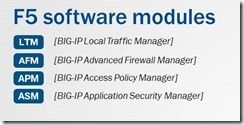hsm
3 TopicsHardware Security Modules
In this final stretch of security month, what hopefully has been a helpful serving of security content concludes with a look at some of the technologies that support our integrated solutions. In this article, we’ll cover the hardware security modules (HSM.) An HSM is a crypto management device that generates and stores keys locally, protects that key material from leaving the device as well as enforces policy over key material usage, and secures cryptographic operations. Back before I had the privilege to work for F5, my first exposure to HSM was working on a DoD contract. The web application infrastructure I was responsible for was subject to the FIPS requirements mandating key material be kept under hardware lock and, ahem, key. For years this was under the hood of your BIG-IP appliance (on select models ordered with FIPS cards,) and is still available in that configuration. The need for crypto offload Locking away the keys in a custom hardware module in your BIG-IP is all well and good, and still applicable in many situations, but with the advent of hybrid and completely virtualized infrastructures, the need for network-based HSMs, or netHSMs (and now cloudHSMs for that matter,) arose. F5’s integration points with netHSM technologies were developed specifically for this need, allowing VE, vCMP, Viprion chassis, as well as any other BIG-IP appliance without FIPS hardware to be utilized with FIPS deployments. In the fall, John covered some of the crypto offload options available to F5, FIPS compliant HSMs and otherwise in this Lightboard Lesson if you haven’t checked it out. The Fine Print With a netHSM deployment, there are considerations on both the client and server side. For BIG-IP, a separate license is required to use a netHSM. On the netHSM, depending on the number of clients (i.e., BIG-IP devices) you use, you might need additional licenses from the netHSM vendor. Just like your infrastructure and application servers, redundancy and scale should be considerations as well, so understanding your SSL traffic needs is important. The netHSM configurations require installation of the client software on BIG-IP, so that should be included not just as part of the initial deployment, but considered in future hotfix and upgrade plans as well, as the client software will not be carried forward and will need to be reinstalled. For vCMP and Viprion systems, please note that client software will need to be installed for each guest needing FIPS validation. For further questions on the deployment scenarios and nuances with regard to either the Thales (née SafeNet) or nCipher (née Thales) solution, drop a comment below, ask a question in Q&A , or reach out to your sales team. Resources Configuring one of our partner netHSMs on BIG-IP is a more complex scenario than most deployments. The install guides for Thales (née SafeNet) and nCipher (née Thales) are below in this list of resources. BIG-IP System and Safeness Luna SA HSM: Implementation BIG-IP System and Thales HSM: Implementation Top 10 Hardcore F5 Security Features in 11.5 (good BIG-IP FIPS/nCipher/Thales comparison chart here) US Federal: CCRI Season Lessons Learned3.7KViews0likes3CommentsUsing AWS CloudHSM with F5 BIG-IP
With the release of TMOS version 17.5.1, BIG-IP now supports the latest AWS CloudHSM hardware security module (HSM) type, hsm2m.medium, and the latest AWS CloudHSM Client SDK, version 5. This article explains how to install and configure AWS CloudHSM Client SDK 5 on BIG-IP 17.5.1594Views1like4CommentsThe Top Ten Hardcore F5 Security Features in BIG-IP 11.5.0
that went unsung at #RSAC 2014. There’s lots of new security stuff in BIG-IP that shouldn’t be overlooked amidst all the press releases and hoopla at #RSAC 2014. Don’t get me wrong, hoopla has its place: for example, the banking community is excited about the new anti-fraud thing we bought. And Pete Silva’s video interview of Joel Moses for the new Secure Web Gateway forward proxy is great. But the features I’m talking about are too low-level to warrant a press release, interview, or media dinner. In a way they’re even more important because platform-level security features are often the basis for the higher-level software-defined applications services that reside upon them. Just before the RSA 2014 conference, we upgraded the BIG-IP platform to version 11.5.0. The upgrade has hundreds of new features and bug fixes, but these following security features are particularly cool. The Top 10 Hardcore F5 Security Features in BIG-IP 11.5.0 UDP Flood protection in AFM –The new UDP flood protection in the Advanced Firewall Manager (AFM) module automatically detects and mitigates UDP floods. It even categorizes incoming UDP packets so that you don’t end up rate-limiting legitimate DNS requests. Full ECC and DSA Support for client SSL profiles -- on the same virtual server with RSA profiles! A single client SSL profile can now have up to three certificate/key pairs associated with it to support the full range of cipher suites now available! This is huge; people have been asking for it since before germs. Heavy URL DDoS Protection in ASM. Smart attackers may attempt to slow a website by repeatedly requesting heavy URLs such as large media objects or slow database queries. The new Heavy URL DDoS feature of ASM identifies your vulnerable URLs and then defends them. AES-GCM mode for TLS1.2! The crypto community has been waiting for GCM to become prevalent enough to start switching away from simple block and streaming ciphers. This is a big step toward enabling the whole world to be ready for GCM, and what we hope is a future reduction in TLS protocol weaknesses. Improved whitelist and blacklist support in AFM. IP addresses that are blacklisted or whitelisted can be assigned to pre-existing or user-defined blacklist classes (called categories in tmsh), and firewall actions can be applied based on those categories. AFM can be configured to query dynamic lists of blacklist or whitelist addresses, called feeds, and update the configuration accordingly. SafeNet Luna SA HSM integration. For the last few years we’ve been getting requests to integrate with Networked Hardware Security Modules (HSM). We’ve been supporting nCipher (née Thales) HSMs, and now with 11.5.0 we’re announcing our integration with Thales (née SafeNet). Hook your virtual BIG-IPs up to this and you have a pretty compelling security story. F5 HSM Feature Comparision 11.5.0 Features BIG-IP FIPS nCipher (née Thales) Thales (née SafeNet) VIPRION ✔ ✔ ✔ vCMP ✔ ✔ GTM/DNSSEC ✔ ✔ PKCS#11 N/A ✔ ✔ Virtual Edition ✔ ✔ AWS CloudHSM ✔ FIPS 140-2 Level 2 ✔ ✔ ✔ FIPS 140-2 Level 3 ✔ ✔ Perfect Forward Secrecy ✔ ✔ ✔ EAL4+ ✔ ✔ Performance 9000 TPS 3000 TPS 1500 TPS 45 Hardware-level DDoS protections in AFM. The firewall team has added and refactored the network DDoS code to make the hardware vectors exactly match the software vectors. See the complete list of pathological packets that will be dropped before the CPU even sees them. Full PKCS#12 support for key import. The paranoid among us point to the Edward Snowden files and say they’ve never had more reason to be paranoid. For them, we’re making it possible to import SSL keys directly to BIG-IP without them ever being available in the clear. Appliance Mode for vCMP guests. Appliance mode disables the root account and prevents access to the bash system shell. Appliance mode can now be configured on a guest-by-guest basis in multi-tenant environments where a particular guest virtual instance may be less trusted than others. BER-encoding iRule commands. When I was a lazy software developer, one of my goals was to get through life without ever having to write an ASN1 decoder. Guess what, someone has done just that for iRules! Check out the BER/DER iRule command reference. Honestly, this is kind of amazing. These were just the top 10 - there are a ton more features in 11.5.0 (release notes). You can play with them all in your cloud with the virtual edition of BIG-IP – download it here and have fun!589Views0likes1Comment

